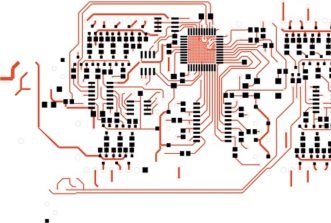This website uses cookies so that we can provide you with the best user experience possible. Cookie information is stored in your browser and performs functions such as recognising you when you return to our website and helping our team to understand which sections of the website you find most interesting and useful.
Printable ‘Electronic Spider Silk’ Sensors for Human Skin
The innovative method of creating bioelectronic fibres for adaptive sensors is inspired by the remarkable properties of spider silk, known for its ability to conform and adhere to various surfaces. These 'spider silks' are designed to incorporate bioelectronics, enabling the addition of diverse sensing capabilities to the 'web' and creating sensors that can adapt to different environments.
The fibres, which are at least 50 times thinner than a human hair, are incredibly lightweight. Researchers successfully printed these fibres directly onto the delicate seedhead of a dandelion without compromising its structure. When applied to human skin, the fibre sensors conform seamlessly to the skin's surface, exposing sweat pores without causing any discomfort to the wearer. Initial tests on human fingers indicate that these fibres could serve as effective continuous health monitors.
This groundbreaking approach to enhancing living structures with minimal waste and emissions has vast potential applications across various fields, including healthcare, virtual reality, electronic textiles, and environmental monitoring. The findings of this research have been published in the prestigious journal Nature Electronics.
Augmenting human skin with electronic sensors could revolutionize how we interact with the world. For instance, sensors directly printed on the skin could enable continuous health monitoring, enhance our understanding of skin sensations, or elevate the immersive experience in gaming and virtual reality applications.
Professor Yan Yan Shery Huang, leading the research at Cambridge’s Department of Engineering, emphasized the importance of creating bioelectronics that are imperceptible to users while maintaining sustainability and minimal waste. The seamless integration of electronic devices with biological surfaces is crucial for preserving the natural interaction between individuals and their environment.
Various methods exist for developing wearable sensors, each with its limitations. While flexible electronics offer versatility, they often hinder gas and moisture exchange, akin to wrapping the skin in cling film. Other approaches, such as gas-permeable electronics, still disrupt normal sensation and rely on energy-intensive manufacturing processes.
The researchers utilized a combination of PEDOT:PSS, hyaluronic acid, and polyethylene oxide to spin their bioelectronic 'spider silk.' This water-based solution enabled precise control over the fibre production process, allowing the fibres to conform to intricate surfaces, including human fingerprints.
Tests conducted on different surfaces, including human fingers and dandelion seedheads, demonstrated the high sensor performance of the bioelectronic fibres while remaining imperceptible to the host. This innovative spinning technique offers a sustainable and efficient way to produce large-area sensors without the need for complex manufacturing facilities.
The bioelectronic fibres, designed to be repairable, can be easily washed away at the end of their lifespan, generating minimal waste. Compared to traditional sensor fabrication methods, the Cambridge-developed sensors require significantly less energy and resources, making them a more sustainable option for sensor production.
With the potential to revolutionize applications in health monitoring, virtual reality, agriculture, and environmental surveillance, the researchers are exploring the integration of additional functional materials into the fibre printing process. This advancement could lead to the development of integrated fibre sensors with display, computation, and energy conversion capabilities.
The research, supported by various organizations including the European Research Council and Wellcome, is being commercialized with the assistance of Cambridge Enterprise, the University's commercialization arm.
Image: Researchers have developed a method to make adaptive and eco-friendly sensors that can be directly and imperceptibly printed onto a wide range of biological surfaces, whether that’s a finger or a flower petal. Credit University of Cambridge.














